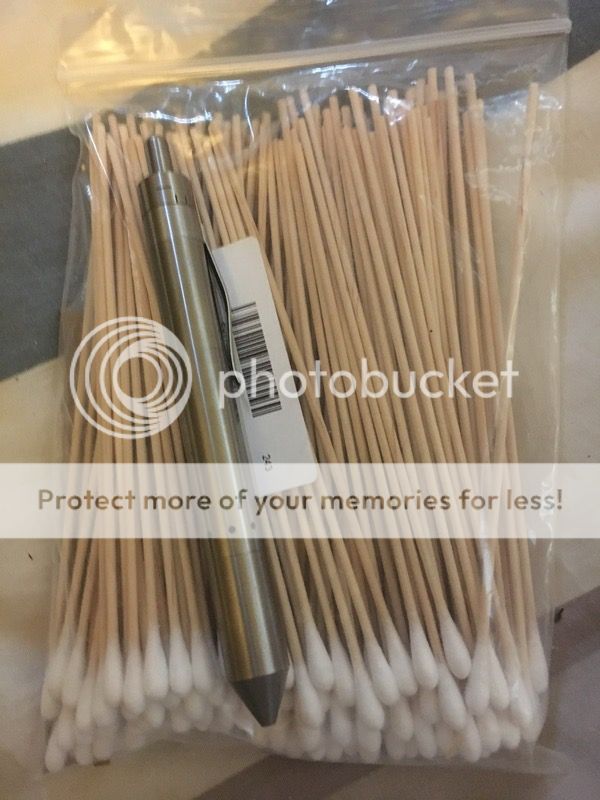There is a difference, but you have to either be able to detect it electronically with meters or you have to be in some pretty close to perfect acoustic conditions.
As an electrician, I was remodeling a very large electronics retail store when a Bose rep came in for a demo. They actually build a room inside the store with each and every speaker placed in its optimal position. It's really something to hear. But there is ZERO furniture and nothing but people which they limit and other speakers breaking up the sound. The two same speakers from the same source playing the same channel did have a difference in sound, to my ear, mostly volume lol. But to test him I went behind the equipment and changed the speaker wires to make sure his special track that played the same sound from right and left channels wasn't rigged, the same speaker was still softer in volume.
With all that said, I have very cheap speaker wire for all my short runs except the subwoofer to about $4k in Klipsch speakers. I believe in the theory, but real world is where I live and the benefit doesn't match the price in my mind lol.
Gold conducts electricity incredibly well, but has so many limitations including cost that it's only used at the termination ends of cable. It would make for a great set of contacts on this device IF it can withstand the heat.
I stand by my original belief that all of the back end and blue light issues are because of poor connections. Their decision to make this a wireless unit still needs some fine tuning in the design. Until then, check the battery and contacts for pitting/tarnishing and make sure all the threading is iso clean. As long as the clip stays firmly connected so it's not a hotspot, the only other item is the temp dial. Sounds like compressed air might be the easiest even though the thought scares me. Blown out or deeper into crevices is what you get with air..... I like to vacuum.
Sorry for the off topic, but it's sorta theory based for the GH electrical heat issues.
This is a cool story, I would love a Bose built room in my house.
However, what was the gauge difference of the wires? This is the only factor that counts audibly, unless one cable is damaged or purposely faulty.
http://www.roger-russell.com/wire/wire.htm
I still think that if you were to be measuring, the bottle-necks of solder, components and the Ti shell would mean we would not see much, if any, benefit from gold instead of brass contacts. I am sure you could measure it to expose minor difference, but would you not need extremely precise gear, meaning any gain is effectively negligible?
But my main concern lies with the accumulation of gunk. If this is caused by arcing, does that mean there is a fundamental connection problem, or is this normal for contacts of this nature (unavoidable)?
Check out my PCB
Put gold under that carbon and the problem doesn't go away, it is a problem right?
*On further inspection (gave it a wipe with a dry q-tip) it seems that the majority is actually discoloration of the metal plate. It's either scratched or... something
It has gotten worse since I've had the hopper, it's probably caused from the battery terminal scraping the contact when the back end is twisted on and the spring depresses.
Also,
@JoeMama after cleaning all the contacts, I get a louder click. The click is a good sign and it is power being sent to the heater in pulses. If you turn the dial up when this is occuring the clicking gets louder. If the clicking stops it means the target temperature has been met and less power is being sent accordingly (hence it can stop with blue lights).


 ). Used a q tip to wipe until shiny and clean. Let sit for a few hours and made sure no iso was left. Even gave them a few dry runs before loading. Now the blue lights flicker right away on full batts, the back end seemingly heats up way too quick and too much and the vapor and abv are very light...For both hoppers....That were both working fine hours before. I have had inconsistencies with my 5 batts but for the most part they all gave me at least a solid load with 4-5 good long strong hits that leave perfectly extracted dark abv. I'm addicted to this damn hopper and nothing else seems to work as well...the small silver lining is it is so damn powerful that I seem to still be getting a lil medicated from the whispy pulls..lol..I'll take what I can get..
). Used a q tip to wipe until shiny and clean. Let sit for a few hours and made sure no iso was left. Even gave them a few dry runs before loading. Now the blue lights flicker right away on full batts, the back end seemingly heats up way too quick and too much and the vapor and abv are very light...For both hoppers....That were both working fine hours before. I have had inconsistencies with my 5 batts but for the most part they all gave me at least a solid load with 4-5 good long strong hits that leave perfectly extracted dark abv. I'm addicted to this damn hopper and nothing else seems to work as well...the small silver lining is it is so damn powerful that I seem to still be getting a lil medicated from the whispy pulls..lol..I'll take what I can get.. Any advice is appreciated I know I've heard peeps mention issues after cleaning...hence my apprehension
Any advice is appreciated I know I've heard peeps mention issues after cleaning...hence my apprehension 

 ...
...

 lol
lol







